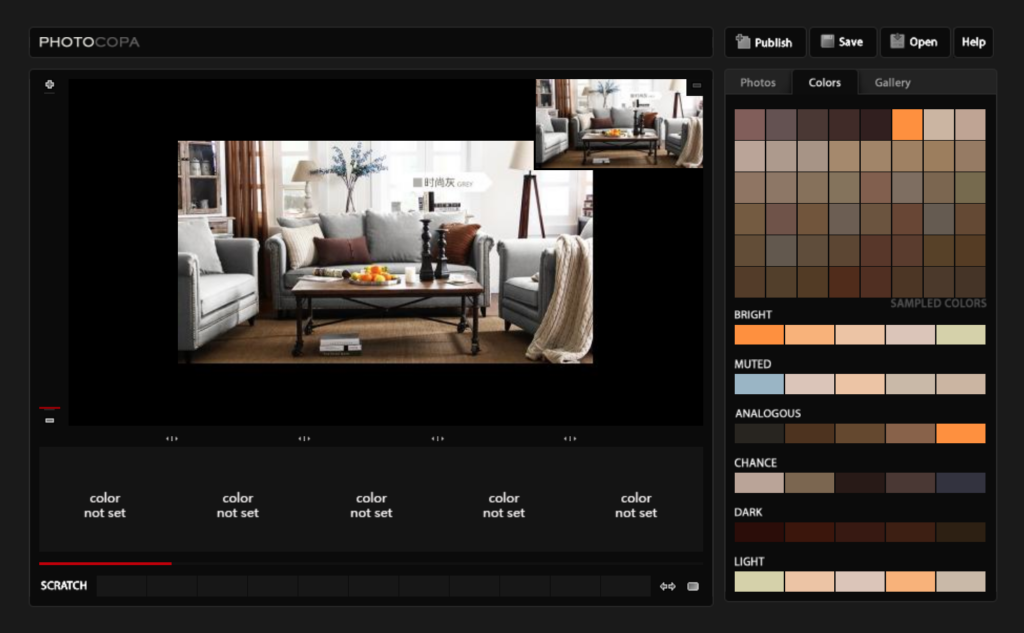Color me impressed: 10 ways to pick a color palette
In design, working with color is both an art and a science. So much is involved: there’s intuition, physics, electromagnetic radiation, algorithms, taste, brand, culture, philosophy… it’s complicated, and yet it’s not.
Once you’ve done your research, how do you get to work picking appropriate colors that create a cohesive color palette? Where do you start? Luckily, there are lots of different ways:
- From your client’s brand guidelines | Sometimes that’s all you’ve got to work with. Sometimes they’re terrible. Often, your stuck with a predictable shade of corporate blue. Have fun.
- From a photograph | PHOTOCOPA lets you make a photo-inspired color palettes. Simply upload your own photograph or use one from the web. You’re able to add it to a gallery so others others can use it as inspiration, or you can keep it private.” Also see Colormind.
- From a movie | Follow @colorpalette.cinema on Instagram for palettes generated from film scenes: “Color can affect us psychologically, often without us being aware, and can be used as a strong device in a story.”
- From famous art | “Color Lisa is a curated list of color palettes based on masterpieces of the worlds greatest artists. Each palette was painstakingly created by color obsessed designers, artists, museum curators, and masters of color theory.”
- From a base color | Adobe Color (formerly Kuler) lets you “create your perfect palette by choosing a base color and applying our Color Rules. Convert your color themes to Pantone swatches, then download them to use in desktop applications.”
- From a color wheel | Paletton is built on the classic artistic color wheel—but within a unique RYB color space. They claim that “…the color combinations it produces are very different from those you can get in many computer graphic applications.”
- From tapping your spacebar | Coolors generates color palettes simply by the act of pressing your computer’s space bar. You can then adjust in HSB, RGB, CMYK, Pantone and Copic.
- From mouse movements | Colordot features a very minimalistic interface—all you have to do to change colors is move your mouse: left and right for hue, up and down for lightness, scrolling for saturation. The colors change right before your eyes and when you want to save something, you just click. They also have an iOS app.
- From an AI | Colormind uses deep learning and can learn color styles from photographs, movies, and popular art.
- From a theme word | Palettr takes a completely different approach. Instead of using images or even base colors as a starting point, you instead type in a keyword and it supplies you with a palette that it thinks matches. Unfortunately, the server often is overloaded.
This is just a sampling. There are dozens of quality color palette generators out there—and nearly as many color palette generator roundups! So when your color creativity needs a little boost, know that you have plenty of places to go.
Image: screenshot of Photocopa interface, link #2.
